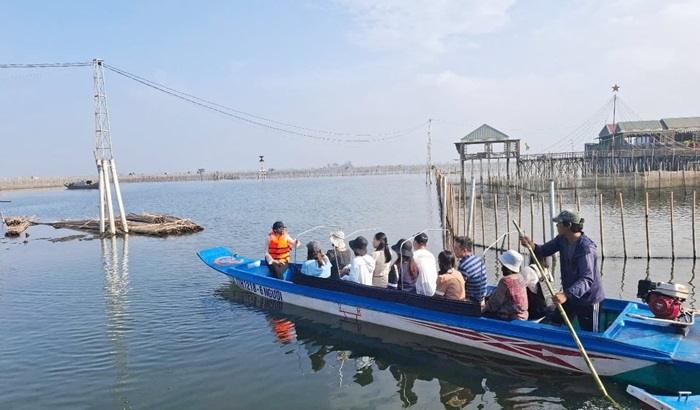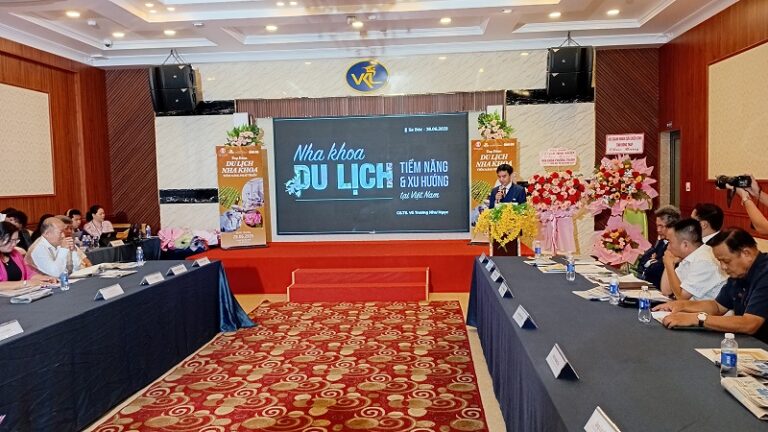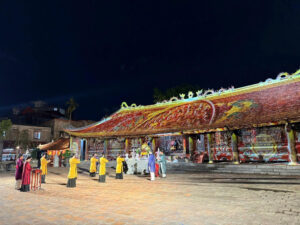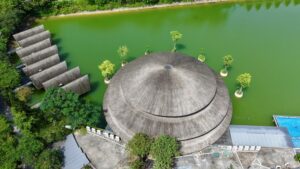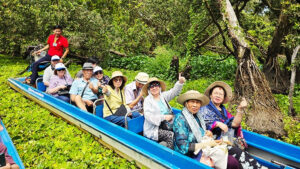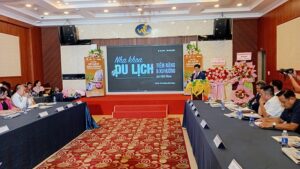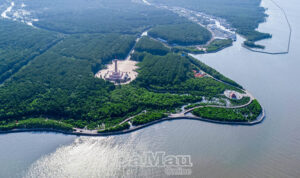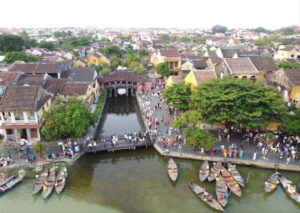Hoi An is a seventy minute flight away and therefore ideal for a long weekend if you can cope with the July temperature which was in the mid-30s (c) with a high humidity level.
We landed at a very modern Danang airport and then had a forty-five minute drive into Hoi An along a respectable highway, which navigated through construction sites and development on both sides. Many of these sites were advertised as forthcoming holiday resorts, that’s a lot of tourists. I envisage that one day Danang and Hoi An will be joined by these developments.
We settled into our resort and enjoyed bathing in the warm bath water that was the sea, ideal for children as the water was as calm as a milk pond and safely netted against nasties, and the sandy beach was a children’s paradise.
We decided to take an excursion into the ancient town of Hoi An in the middle of the next day. This was not a particularly good decision as the heat was at its most intense.
Our first destination was to view the Japanese Bridge. This was built in the early 17th century by Japanese craftsmen. The covered bridge was guarded by Vietnamese security personnel who demanded our entry ticket which we didn’t have. It was all too hard in the heat so we took photos and admired the treasure from the street.
I had read that the bridge doubles as a temple, with shrines to several deities located inside. One theory of the bridge’s religious purpose is that it was built to subdue a world-spanning ‘mamazu’ dragon monster, whose head was located in India and its tail in Japan. The movement of the tail was believed to cause earthquakes in Japan. As Vietnam was located in the area of the mamazu’s back, the bridge was intended to pin the mamazu down, thus preventing any earthquakes.
We continued our way along the river, the dark murky water hiding its secrets and looking very uninviting. Wooden fishing boats with a single sail had finished their morning’s work and were roped to a bridge which was adorned with silk lanterns evocative of the strong Chinese cultural influence which dates back to the 16th century. Then Chinese and Japanese traders built the commercial centre and Hoi An was a busy port. On the 14th of every month Hoi An celebrates this delightful aspect of its heritage by turning off all the electricity and the Old Quarter is lit only by the beautifully coloured and shaped lanterns.
The evening or late afternoon is the ultimate time to browse the shops, the fierce afternoon sun has lost its sting and dusk falls early and quickly, allowing the tourist to enjoy the lanterns at their best as they haggle with shop staff and contemplate where to have dinner.
Facing the river are small two- storey houses, most of them now shops with enticing modern paraphernalia and clothing hidden behind the intricately carved wooden facades. The old buildings have withstood 300 years of frequent flooding and battering.
The tourists descend in battalions; Japanese groups in matching hats with their tour leader wielding an identification banner to follow, Australian and American ex Vietnam veterans, the flotsam and jetsam of the backpacker brigade and families with small children staying at the local resorts. All are after a shopping bargain and the shop keepers will make sure they get them.
We made time to eat as a small restaurant with black and white check clothes. After considering the menu we ordered char-grilled fish, which, we were assured, was snapper. Our fourth party member satisfied himself with garlic bread. He was still suffering from the ubiquitous gippy tummy.
The fish was presented with its head and tail intact, cocooned in banana leaves. Our host jumped to our assistance, and with skilful dexterity extricated the fish from its bedding. It took him more time to fillet the bones out, which he did, very professionally. We decided that this ‘snapper’ was a different species to the ‘snapper’ we knew, but tasty anyway.
We continued on after our meal down to the market. This was ‘siesta time’, or whatever it is called in this part of the world. Stall owners were lying on top of their benches head to tail with the cuts of meat, the occasional fly buzzing among these unrefrigerated and uncovered delicacies. Other stall holders were sleeping on unmade cardboard boxes. One family had a whole four poster bed secreted in a corner and all were tucked in and covered with cardboard coverings.
The wooden fronted shops were empty of tourists. We didn’t linger long, the heat had entered our souls and we felt drowsy and unable to cope with shopping, even when faced with displays of multi-colored silk clothing.
“A shopper’s paradise” said my friend.
Perhaps, when the sky is not burning like a heated chilli chicken, I will come back.


